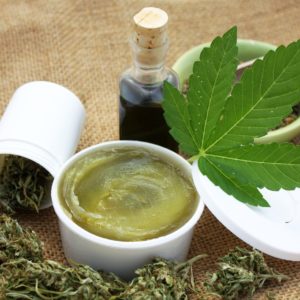It was a long time coming, but legal industrial hemp is here. After decades of grassroots effort, a meaure to legalize and regulate the sale of cannabis products containing less than 0.3 percent THC (marijuana’s psychedelic compound) by weight passed in December’s Farm Bill. Growers, cannabis enthusiasts–even food, beverage, and cosmetic companies are eager to jump into the newly-unregulated space. But could uncontrolled growth choke out the commercial hemp industry before it gets growing?
“New farmers need to know that industrial hemp is still an emerging industry,” warned Franny Tacy, the first woman in North Carolina to grow industrial hemp. Speaking at a victory event hosted by Vote Hemp, a pro-legalization group, Tacy said “about 80 percent of the farmers I know who have planted hemp still haven’t seen any money from it.”
Part of this issue is the relative newness of agricultural hemp markets. Consistent testing procedures, state permitting procedures, and other regulations still need to be established before seeds can go in the ground.
“The changes won’t be drastic this year,” said Tacy. “What I do see this year is an influx of questions [about hemp as a cash crop.]”
Next year, however, the crop could be much larger. Ironically, that fact has some growers urging caution. In Canada, where cannabis was legalized last year, the price of hemp seed has fallen 25 percent in a year due to an overabundance of supply. Hemp advocates in the U.S. are trying to avoid a similar occurrence here, especially because states which have legalized recreation marijuana have also seen precipitous drops in prices.
“If you’re going to grow a crop, you should know where it’s going to be sold, or else you’re setting up for failure,” said Joseph W. Hickey Sr., director of corporate relations at Atalo Holdings, a Kentucky research and development group with a program to help educate farmers about industrial hemp. Canadian producers have largely saturated the international market for hemp seed, meaning that American growers would need to cater to domestic demand–something that isn’t clearly established yet.
Although the U.S. has one of the largest markets in the world for hemp products, until now, the majority of them were imported. Now that restrictions have been lifted, the cosmetic and food industries are exploring the possibilities, but waiting to make sure that hemp seed supplies are adequate.
“The industry is going to be looking for consistency and quality,”Hickey continued. “Big groups won’t enter unless they can be assured of consistent supply.”
This is one of the crucial ways in which industrial hemp will differ from recreational and medical marijuana. As Hickey puts it, hemp farmers need to grow on an agricultural model, not a marijuana, or “horticultural model.” Unlike pot, which is sold in small amounts for relatively high prices, hemp growers will be in the commodities business.
At this early stage, it is tricky to predict just how large of an industry hemp will become. Certainly not all hemp products will be commercially successful, and consumer demand for things like hemp paper and t-shirts may prove to be more of a fad than an industry. According to some industry analysts, investors are being “duped” by an oft-quoted prediction that the industrial hemp market will reach $22 billion by 2022 and the real figures could be far lower, saying that more reasonable predictions are closer to $4 billion.
Part of this variance is due to regulatory uncertainty. Now that industrial hemp has been descheduled, growing it will be regulated by the Department of Agriculture. The use of hemp or hemp derivatives in cosmetics, food, and medication will be regulated by the Food and Drug Administration (FDA). The industrial hemp industry was pleased when the FDA released a letter shortly after the signing of the Farm Bill, taking this as a sign that the agency wanted to work through the regulatory process quickly.
Still, uncertainty remains. Though it would be unlikely, the FDA could decide that industrial hemp is not safe for consumption.
“It would certainly hurt our industry if FDA made the final recommendation that CBD was in fact not allowed as a dietary ingredient, or anything like that,” Dylan Summers, director of government affairs and compliance at Lazarus Naturals, a vertically integrated hemp and CBD firm based in Oregon, told InsideSources.
“There is kind of a precedent [for medical uses] because Sativex and Epidiolex [two recently-approved epilepsy drugs] have brought cannabinoids to market in a pharmaceutical form for use as a medication, but if the FDA came out and said that [edible use was not allowed], then we would have to switch gears.”
Meanwhile, states also need to establish the infrastructure to handle permitting of industrial hemp farms and testing of the finished product.
“The intent was that this [federal law] is a floor and states have a lot of flexibility in implementation,” said Patrick Goggin, a cannabis attorney and director at Vote Hemp.
Given how much work remains to be done before hemp products can hit the shelves, farmers would be advised to be cautious. A surplus of hemp or hemp seed early in the game could have a lasting effect on the industry and growers are already trying to prepared for the worst.
“We’re planning for it,” said Mike Lewis, a Kentucky hemp farmer, of a possible price crash. “It’s inevitable. We’re just hoping we will have enough momentum to survive it.”
It’s a grim note in what is otherwise a jubilant period. After decades of lobbying, industrial hemp is back in the books as a cash crop. Now farmers just need to make cash from it.

